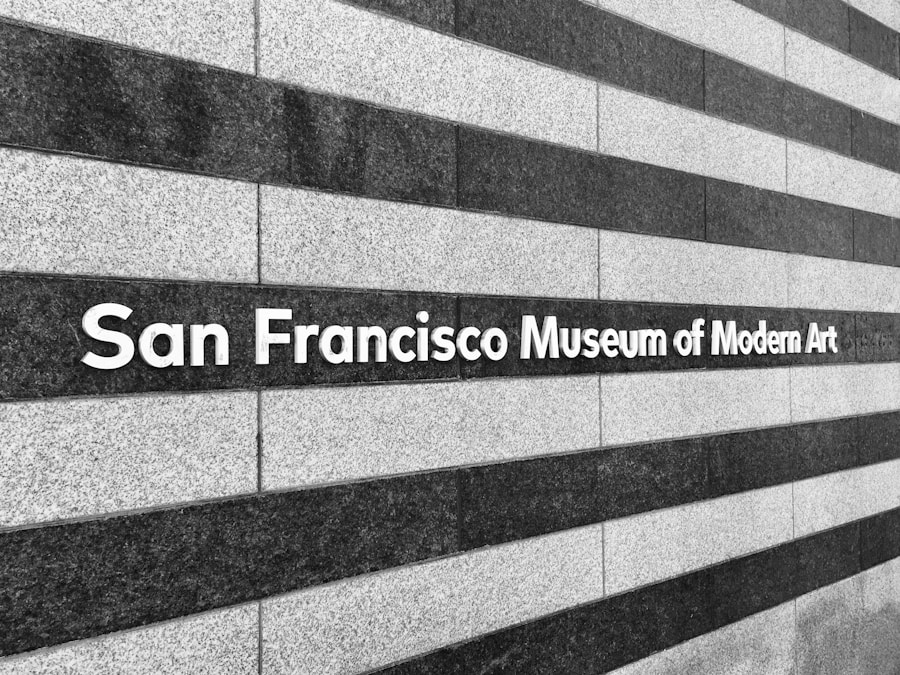Museums serve as vital institutions in the preservation of cultural heritage, acting as custodians of the collective memory of societies. They house artifacts, artworks, and documents that encapsulate the history, traditions, and values of various cultures. By collecting, conserving, and exhibiting these items, museums provide a tangible connection to the past, allowing current and future generations to engage with their heritage.
This role is particularly significant in an era where globalization threatens to homogenize cultural identities. Museums not only safeguard physical objects but also the stories and meanings attached to them, ensuring that diverse narratives are represented and remembered.
They collaborate with historians, anthropologists, and community members to contextualize their collections within broader historical frameworks. This scholarly work is essential for interpreting artifacts accurately and responsibly, as it helps to illuminate the complexities of cultural narratives. For instance, a museum dedicated to indigenous cultures may work closely with local tribes to ensure that their histories are represented authentically and respectfully.
Through such collaborations, museums become dynamic spaces for dialogue and learning, fostering a sense of ownership and pride among communities regarding their cultural heritage.
Key Takeaways
- Museums play a crucial role in preserving cultural heritage by safeguarding and showcasing artifacts, artworks, and documents that hold historical and cultural significance.
- As guardians of historical artifacts and documents, museums ensure that these items are preserved for future generations and protected from damage or destruction.
- Museums contribute to the preservation of local and global identities by providing a platform for communities to celebrate and share their cultural heritage with the world.
- Museums have a significant impact on education and public awareness of history and identity by offering educational programs, exhibitions, and events that engage and inform the public.
- Challenges faced by museums in preserving memory and identity include funding constraints, conservation efforts, and the ethical considerations of displaying sensitive cultural artifacts.
- The future of museums as keepers of memory and identity will involve embracing technology, fostering community engagement, and adapting to changing societal needs and values.
Museums as Guardians of Historical Artifacts and Documents
Preservation and Conservation Efforts
The meticulous processes involved in conservation—such as climate control, restoration techniques, and proper storage—are critical in ensuring that these items withstand the test of time. For example, the British Museum employs advanced conservation methods to protect its vast collection, which includes the Rosetta Stone and the Elgin Marbles. Such efforts are essential not only for maintaining the physical integrity of artifacts but also for preserving their cultural significance.
Archives and Historical Records
Museums often serve as repositories for documents that provide insight into historical events and societal changes. Archives within museums can include letters, photographs, and official records that chronicle pivotal moments in history. The United States Holocaust Memorial Museum, for instance, houses an extensive collection of documents related to the Holocaust, including survivor testimonies and Nazi propaganda.
Education and Historical Understanding
By curating these materials, museums play a crucial role in educating the public about historical atrocities and fostering a deeper understanding of human rights issues. This archival function underscores the importance of museums in maintaining a comprehensive historical record that can inform contemporary discussions about identity and memory.
How Museums Contribute to the Preservation of Local and Global Identities

Museums are instrumental in shaping both local and global identities through their collections and exhibitions. On a local level, they often reflect the unique cultural narratives of their communities, showcasing regional art forms, traditions, and histories. For example, the National Museum of African American History and Culture in Washington, D.C., highlights the contributions and experiences of African Americans throughout U.S.
history. By presenting these stories within a museum context, local identities are celebrated and preserved, fostering a sense of belonging among community members. At the same time, museums also contribute to global identities by facilitating cross-cultural exchanges and dialogues.
International exhibitions often bring together artifacts from different cultures, allowing visitors to explore shared human experiences while appreciating diversity. The Louvre Museum in Paris frequently hosts exhibitions that feature works from various civilizations, promoting an understanding of how different cultures have influenced one another over time. This global perspective is essential in an increasingly interconnected world, as it encourages empathy and respect for cultural differences while highlighting commonalities that unite humanity.
The Impact of Museums on Education and Public Awareness of History and Identity
Museums play a pivotal role in education by providing immersive learning experiences that engage visitors with history and identity in meaningful ways. Through guided tours, workshops, and interactive exhibits, museums offer opportunities for individuals to explore complex historical narratives beyond what is typically covered in traditional educational settings. For instance, the Museum of Tolerance in Los Angeles focuses on educating visitors about the Holocaust and contemporary issues related to prejudice and discrimination.
By fostering critical thinking and encouraging dialogue around these topics, museums contribute significantly to public awareness and understanding. Furthermore, museums often collaborate with schools and educational institutions to develop programs tailored to various age groups. These initiatives can include curriculum-based activities that align with educational standards while promoting cultural literacy.
The American Museum of Natural History in New York City offers programs that allow students to engage with scientific concepts through hands-on experiences with their extensive collections.
By making history accessible and engaging, museums empower individuals to connect with their identities and understand their place within broader societal narratives.
Challenges Faced by Museums in Preserving Memory and Identity
Despite their crucial role in preserving memory and identity, museums face numerous challenges that can hinder their effectiveness. One significant issue is funding; many museums operate on tight budgets that limit their ability to acquire new collections or invest in conservation efforts. Economic downturns can exacerbate this problem, leading to reduced visitor numbers and subsequent cuts in staff or programming.
For instance, smaller regional museums may struggle to compete with larger institutions for funding and resources, which can result in a lack of visibility for local histories. Additionally, museums must navigate the complexities of representation and inclusivity within their collections. As societal values evolve, there is increasing scrutiny regarding whose stories are told and how they are presented.
Museums are challenged to address historical injustices while ensuring that marginalized voices are included in their narratives. The Smithsonian Institution has made strides in this area by actively seeking input from diverse communities when curating exhibitions. However, this process can be fraught with tension as institutions grapple with their own histories and the legacies of colonialism or discrimination embedded within their collections.
The Future of Museums as Keepers of Memory and Identity

Digital Transformation
Digital technology has already begun to transform how museums operate; virtual tours, online collections, and interactive apps allow broader access to cultural heritage than ever before. This shift not only democratizes access but also enables museums to reach audiences who may not be able to visit in person due to geographical or financial constraints.
Inclusivity and Representation
Moreover, as society becomes increasingly aware of issues related to representation and inclusivity, museums will need to adapt their practices accordingly. Engaging with communities through participatory programming will be essential for ensuring that diverse voices are heard and represented within museum narratives. This could involve co-curation projects where community members collaborate with museum staff to develop exhibitions that reflect their histories authentically.
Remaining Relevant
By embracing these changes, museums can continue to fulfill their role as vital stewards of memory and identity while remaining relevant in an ever-evolving cultural landscape.
In a related article, “Understanding Sociological Perspectives,” the author delves into the various sociological theories that can help us better understand the role of museums as keepers of memory and identity. By exploring concepts such as symbolic interactionism and structural functionalism, we can gain a deeper insight into how museums shape our understanding of the past and present. To read more about this topic, check out the article here.
FAQs
What is the role of museums in preserving memory and identity?
Museums play a crucial role in preserving the collective memory and identity of a society by collecting, conserving, and exhibiting artifacts, artworks, and historical documents.
How do museums contribute to preserving cultural heritage?
Museums contribute to preserving cultural heritage by safeguarding and showcasing objects and artworks that hold historical, artistic, and cultural significance for a community or society.
What types of artifacts and objects do museums typically preserve?
Museums typically preserve a wide range of artifacts and objects, including historical documents, artworks, archaeological findings, cultural artifacts, and items of historical significance.
How do museums help in transmitting knowledge and understanding of the past?
Museums help in transmitting knowledge and understanding of the past by curating exhibitions, organizing educational programs, and providing access to historical and cultural resources for the public.
What is the significance of museums in shaping collective memory and identity?
Museums play a significant role in shaping collective memory and identity by presenting historical narratives, cultural traditions, and artistic expressions that contribute to a community’s sense of belonging and shared heritage.






















+ There are no comments
Add yours